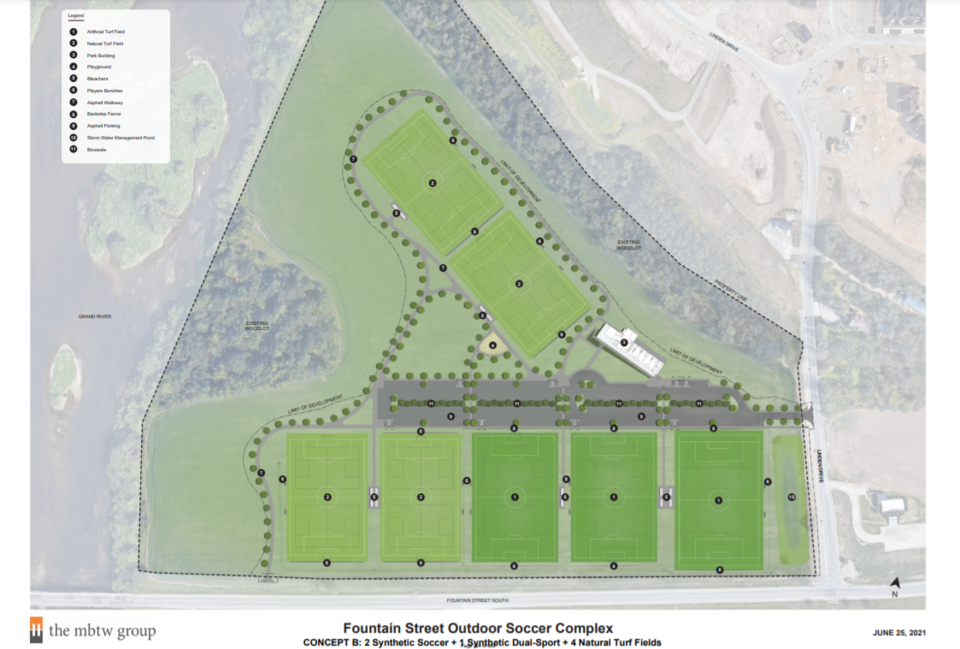As the City of Cambridge prepares to start construction on its $13.7 million soccer complex this summer, the region’s environmental advisory committee wants assurances that measures are in place to protect nearby wildlife.
It's asking the city to construct all trails, fencing and in-ground infrastructure well outside of a 30-metre naturalized buffer zone established in the site plan to protect sensitive flora and fauna next to the Grand River.
The comments, tabled at Monday's ecological and environmental advisory committee meeting, come in response to the completion of a two-phase environmental impact study for the facility that has been years in the making.
The 54.7 hectare property next to Fountain Street and Linden Drive lies within the Blair-Bechtel-Cruikston Environmentally Sensitive Landscape and is identified as a "significant valley" in the Regional Official Plan.
Because of the facility's proximity to the river, the first phase of the environmental impact study recommended a reconfiguration of the soccer fields and a modified site design that "incorporates avoidance, mitigation and enhancements to protect the environmental features and their functions."
Cambridge council voted to support the reconfigured seven-field plan last August.
It will contain two synthetic turfs, one synthetic dual-sport turf for soccer and rugby, and four natural turf soccer fields.
The complex will also include a 6,500-square foot service building with public and universal washrooms, change rooms, multi-purpose space, staff room and equipment storage, 16 accessible and 299 standard parking spaces, pathways and trails, and an open lawn area for warm-up/training.
A report presented at Monday’s meeting also recommends lighting at the soccer complex be directed away from sensitive areas and limited to time of use, and that permanent fencing be installed on the perimeter of the buffer to keep people away from potential turtle nesting sites.
The recommendation also asks the city to implement a bald eagle mitigation plan.
Surveys of breeding birds along the edge of the property identified 48 species, including four species at risk: bald eagles, barn swallows, bank swallows and eastern wood-pewees.
Wintering bald eagles have been reported along that section of the Grand River for more than 20 years, according to the environmental impact study.
To accommodate the species at risk, the study recommends shifting trails to the outer limit of the buffer in proximity to the nests, and retaining all of the riparian woodland on the property.
The report says saving the trees along the outer edge of the park will help other species at risk that may have been impacted otherwise, including bats that live in hollowed-out tree cavities and loose bark.
The committee also wants the Grand River Conservation Authority and the city to ensure whatever permanent fencing material chosen for the site is suitable to handle impacts from potential flooding.
The committee asks that all built structures, including sanitary sewers and water lines that encroach on the 30 metre buffer on the north side of the property, be moved outside of the buffer.
It also wants assurances from the GRCA that a stormwater management plan for the site is sufficient.
Construction on the facility is expected to begin this spring with the expectation it will be open for public use in spring of 2023.


.png;w=120;h=80;mode=crop)
